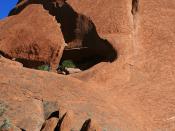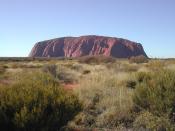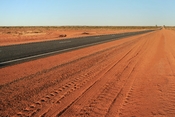Australian Aborigines Prior to the colonization of Australia by the British in the late 1600's, large group of natives called Aborigines lived there. They received the name Aborigine due to the translation of the word "the people who were here from the beginning" (Internet, Aboriginal history and culture). The Australian Aborigines occupied the entire Australian continent, which included the large island of Tasmania. By the time the British arrived, the Aborigines established a culture to include Art, multiple languages, social structure, and religious and spiritual ideas. It is very important to understand the land of Australia, and the development of the government, which as change the way of life for these people.
Australia is the smallest of the world's seven continents and the only one that is comprised of a single political unit. (See Map) The population of Australia is 1,8031,000 with an area of 2,971,081 square miles, (4,753,730 square kilometers), it ranks as the sixth largest country in the world (Oceania, 1995).
Australia is divided into seven territories; New South Wales, Victoria, Queensland, South Australia, Western Australia, Tasmania, Northern Territory. The city of Sydney, in New South Wales, is the largest city with a population of 3,500,000.
The natural vegetation of Australia is comprised of six types, rainforest, sclerophyll forest, woodland, grassland, shrubland, and desert. The interior is comprised of desert, shurbland, and grassland. The Northern Territory, the location of most aboriginal clans and tribes, has woodland along the coast and grasslands and shrublands in the interior.
Ayers Rock in the Northern Territory is a very spiritual symbol for the Aborigines. (See Picture) The most important possession of the Aborigines is the land they live on. They have a special connection with everything that is natural. Aborigines see themselves as part of nature (Internet, Culture and Art). They see...


